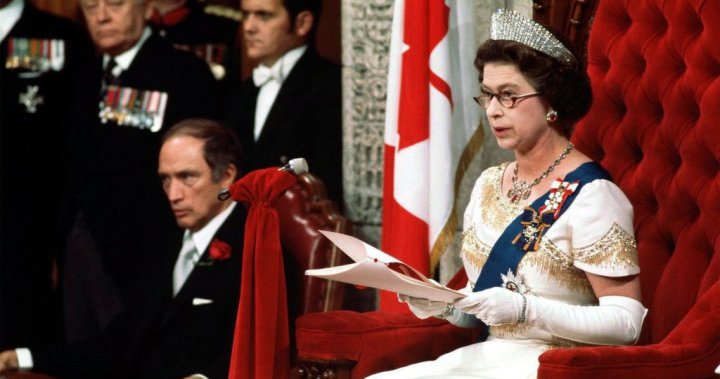King Charles is set to open a new session of Parliament on Tuesday, seated in a throne that incorporates a piece of English walnut from Windsor Great Park, a preserve of his mother, the late Queen Elizabeth.
The Royal Family connection is especially appropriate given that the Queen was the first sovereign to deliver a speech from the throne in Canada, a role usually fulfilled by the Governor General.
When the Queen came to Ottawa in 1957, she not only opened the initial session of the 23rd Parliament but made her first televised address, a personal speech to Canadians from a study at Rideau Hall.
Hundreds of journalists from The Canadian Press and other media outlets followed the every move of the Queen and her husband, Prince Philip, during their visit that Thanksgiving weekend.
Coverage of the royals dominated front pages, dwarfing news of former secretary of state for external affairs Lester Pearson’s Nobel Prize and tips on spotting the recently launched Soviet satellite Sputnik as it traversed the night sky.
The Queen delivered her first televised Christmas message in 1957, a royal holiday tradition that previously involved huddling around the radio.
She had a chance to get used to the camera, and a newfangled teleprompter, when she sat at a desk to speak to Canadians in English and French on Sun., Oct. 13. She was flanked by photos of Philip, son Charles, who was about to turn nine, and daughter Anne, seven.

Get daily National news
Get the day’s top news, political, economic, and current affairs headlines, delivered to your inbox once a day.
Michael Hind-Smith of the CBC, the Queen’s producer, told her during a rehearsal, “If nothing else, enjoy yourself,” CP reported.
The Queen singled out the young people of Canada in her remarks.
“This is a wonderful and exhilarating country worthy of your very best service when you grow up,” she said. “We hope that one day we shall be able to bring our children here to see it.”
Thousands lined Ottawa streets under a blue sky the next day to see the royal couple travel to Parliament in an open gold-trimmed landau pulled by four black horses.
They made their way to the unseasonably warm Senate chamber, where the Queen read the throne speech summarizing the goals of John Diefenbaker’s Progressive Conservative government.
As she spoke, Philip’s eyes “scarcely left her face,” one story noted.
The Queen recalled her predecessor, Elizabeth I, speaking warmly from the heart to members of her last Parliament more than three centuries earlier.
“Now here in the new world, I say to you that it is my wish that in the years before me I may so reign in Canada and be so remembered.”
She would reign as Queen of Canada for another 65 years.
Elizabeth returned to deliver the throne speech 20 years later, on Oct. 18, 1977, during a tour to mark her Silver Jubilee.
The rituals of two decades before once again played out in the streets of the capital.
The Queen and prince were protected from the cold by large buffalo robes as the historic landau proceeded to Parliament Hill, greeted by booming field guns, a CP story noted.
“Boys on bicycles peddled madly beside the royal carriage until police stopped them.”
The couple were greeted by Pierre Trudeau, prime minister at the time, wearing a morning coat adorned by his trademark red rose.
Inside the Senate chamber, a hush fell over assembled parliamentarians and red-robed Supreme Court justices as the Queen donned a pair of half-moon eyeglasses — the first time she had worn spectacles in public — and began reading the throne speech, the news service wrote.
The speech dwelled on themes that might seem familiar today.
“Given the new economic realities to which Canada must adjust, and the urgency of promoting linguistic and cultural harmony, it is readily apparent that Canada is now entering a new era,” the Queen said in French.
The Liberal government of the day used the speech to assure Canadians of its profound dedication to rediscovering “the spirit of unity.”
The Queen concluded by stating that she too dedicated herself anew “to the people and the nation I am very proud to serve.”
© 2025 The Canadian Press






